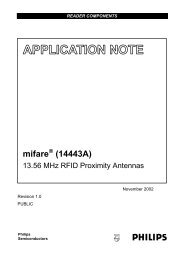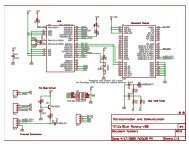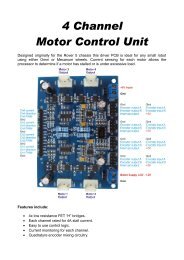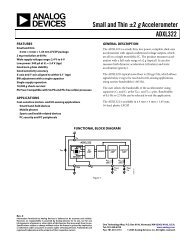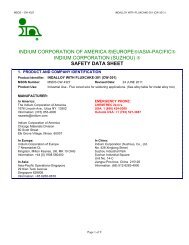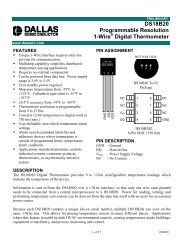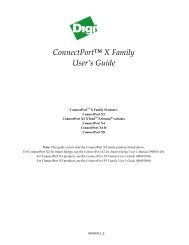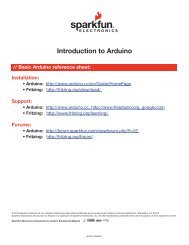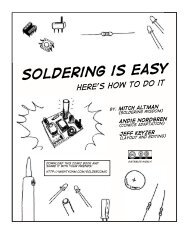u-blox 6
u-blox 6
u-blox 6
Create successful ePaper yourself
Turn your PDF publications into a flip-book with our unique Google optimized e-Paper software.
navBbrMaskfield, where Hot, Warm and Cold starts can be initiated, and also other combinations thereof.<br />
13.3 Aiding / Assisted GPS (A-GPS)<br />
The Challenge of Stand-alone GPS<br />
GPS users expect instant position information. With standard GPS this is not always possible because at least<br />
four satellites must transmit their precise orbital position data, called Ephemeris, to the GPS receiver. Under<br />
adverse signal conditions, data downloads from the satellites to the receiver can take minutes, hours or even<br />
fail altogether.<br />
Assisted GPS (A-GPS) boosts acquisition performance by providing data such as Ephemeris, Almanac, accurate<br />
time and satellite status to the GPS receiver via mobile networks or the Internet. The aiding data enables the<br />
receiver to compute a position within seconds, even under poor signal conditions.<br />
13.4 Aiding Data<br />
The following aiding data can be submitted to the receiver:<br />
• Position: Position information can be submitted to the receiver using the UBX-AID-INI message. Both,<br />
ECEF X/Y/Z and latitude/longitude/height formats are supported.<br />
• Time: The time can either be supplied as an inexact value via the standard communication interfaces,<br />
suffering from latency depending on the baud rate, or using hardware time synchronization where an<br />
accurate time pulse is connected to an external interrupt. Both methods are supported in the UBX-AID-INI<br />
message.<br />
• Frequency: It is possible to supply hardware frequency aiding by connecting a periodic rectangular signal<br />
with a frequency up to 500 kHz and arbitrary duty cycle (low/high phase duration must not be shorter than<br />
50 ns) to an external interrupt, and providing the applied frequency value using the UBX-AID-INI<br />
message.<br />
• Orbit data: Orbit data can be submitted using UBX-AID-ALM and UBX-AID-EPH.<br />
• Additional information: UBX-AID-HUI can be used to supply health information, UTC parameters and<br />
ionospheric data to the receiver.<br />
13.5 Aiding Sequence<br />
A typical aiding sequence comprises the following steps:<br />
• Power-up the GPS receiver<br />
• Send UBX-AID-INI (time, clock and position) message.<br />
• Send UBX-AID-EPH (ephemeris) message.<br />
• Apply optional hardware time synchronization pulse within 0.5 s after (or before, depending on the<br />
configuration in UBX-AID-INI) sending the UBX-AID-INI message if hardware time synchronization is<br />
required. When sending the message before applying the pulse, make sure to allow the GPS receiver to<br />
parse and process the aiding message. The time for parsing depends on the baud rate. The processing time<br />
is 100 ms maximum.<br />
• Send optional UBX-AID-HUI (health, UTC and ionosphere parameters) message.<br />
• Send optional UBX-AID-ALM (almanac) message.<br />
13.6 AssistNow Online<br />
AssistNow Online is u-<strong>blox</strong>' end-to-end Assisted GPS (A-GPS) solution that boosts GPS acquisition performance,<br />
bringing Time To First Fix (TTFF) down to seconds. The system works by accessing assistance data such as<br />
Ephemeris, Almanac and accurate time from our Global Reference Network of GPS receivers placed around the<br />
GPS.G6-SW-10018-A Public Release Page 34 of 201



